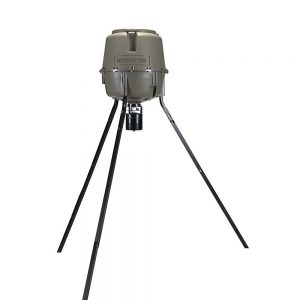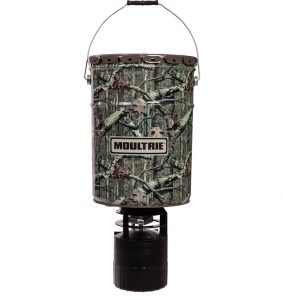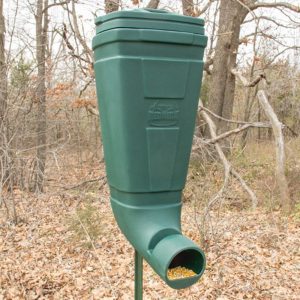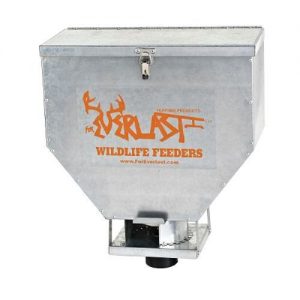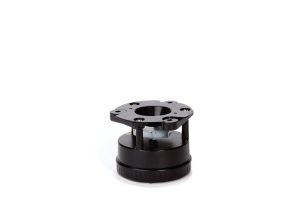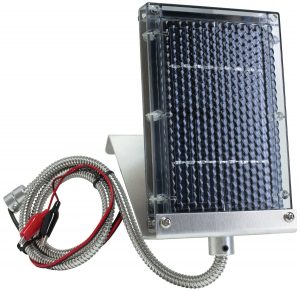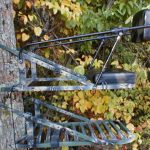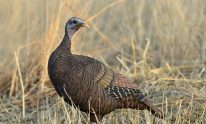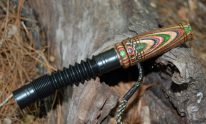Similar Articles
How do I pick the best deer feeder?
Selecting a deer feeder that is right for you really depends on a myriad of variables. The most important thing to know is whether a feeder (sometimes also called a bait station) is legal where you hunt. There are many parts of the country where feeders are not legal, and certain areas even in states where feeders are legal, where a feeder cannot be placed (often state-owned or other governmental body-owned land).
Once you have determined that a feeder IS legal where you hunt, you now have to figure out what is the best setup for you. There are many different types of deer feeders on the market, and not every one is going to be best for you. So how do you choose?
Realistically, who has the time to go and research every feeder out there, then read all of the reviews, let alone be able test various feeders? You can be glad you came upon this guide as we have done the work for you. Our staff of professional hunters as well as many of our field staff have tested many models and spoken with hundreds of our readers to give you the ‘best of’ feeders below.
back to menu ↑What are the best deer feeders by category?
We have broken deer feeders down into four basic categories: Overall best complete feeder kit, hanging feeders, tail gate feeders, and gravity feeders. For do it yourselfers, we also discuss best motor/timer combos as well as the best solar power attachment. Each type is discussed below along with a ‘best of’ recommendation.
back to menu ↑What is the best complete deer feeder?
For this category we examined a multitude of deer feeders that include the barrel, legs, timer and motor as a complete set. This was meant to be a kit you could order, take to the field, and when done assembling, just add corn (and maybe a battery) and you are ready for hunting. Factors we used were how easy it is to set up, quality of the feeder, and how easy it is on the pocket book.
Top Pick: Moultrie 30-Gallon Pro-Lock Feeder
The Moultrie 30-Gallon Pro-Lock Feeder is a complete kit that is designed for easy set up in the field. The unit takes only about 10 minutes or so to get set up and you won’t need an entire toolbox to do it! The timer allows for customizable feed times from 1 to 20 seconds and up to 6 feedings per day. The barrel, which ca hold up to 200 lbs. of corn) is made of a dark green poly material and the legs are rectangular tubular steel. The only things we wish were offered with this feeder are a varmint guard and feet for the legs, but all in all, it is a good feeder at a good price.
PROS:
|
CONS:
|
back to menu ↑
What is the best hanging deer feeder?
A hanging deer feeder is one that has a canister to hold corn (or other suitable feed) and a motor and timer underneath to distribute the corn. The biggest difference between this style and a regular feeder is that this does not have its own legs. It is designed to be suspended from a branch or other strong mounting point and can offer greater convenience to be able to lower it to fill the feeder.
Top Pick: Moultrie 6.5 Gallon Pro Hunter Hanging Feeder
The Moultrie Pro Hunter Hanging Feeder is a very simple and reasonably priced hanging deer feeder. The bucket is designed to hold 40 lbs. of feed, so basically one bag to fill it. It is covered in a Mossy Oak Break Up Infinity camo. The timer is programmable for up to six feedings per day, each for between one and twenty seconds. One issue to note, it can be difficult to remove the lid when the feeder is hanging as the handle can interfere with lid removal.
PROS:
|
CONS:
|
back to menu ↑
What is the best gravity deer feeder?
A gravity feeder is a feeder that essentially has no moving parts, but relies on gravity to provide feed. If you are not familiar with this, think of a cat feeder…as the cat eats the food at the bottom of the feeder, more food is dispensed by gravity. This is the same concept here…it can allow for feeding even in the harshest of conditions as there are no moving parts or motors to freeze up. Another advantage is this type of feeder can be mounted high enough to keep most hogs from being able to get to the food while still allowing for feeding deer.
Top Pick: Redneck Outdoors T-post Gravity Feeder
The Redneck Outdoors T-post Gravity Feeder is an amazingly simple yet effective feeder. It has a groove in the back to allow it to be attached to a t-post. Because setting a t-post is so easy, this allows you to put this feeder virtually anywhere, assuming you are not on a rock shelf! If you are, you can also attach the feeder to a suitable tree with the use of ratchet straps (those you have to provide). The T-post Gravity Feeder features an 80 lb. capacity and is very easy and straight forward to fill.
PROS:
|
CONS:
|
back to menu ↑
What is the best tail gate deer feeder?
A tail gate feeder is a feeder that is designed to mount on the tail gate of a truck to allow for the placement of feed over a large area. Most tail gate feeders also have receiver adapters available to allow for mounting on a 2” receiver tube. Typically, there is a long cord with a cigarette lighter adapter and a switch to allow for the driver of the vehicle to turn the feeder motor on and off while driving. This is a feeder that would typically be used to feed along ranch roads or senderos.
Top Pick: ForEverlast – Tail Gate Feeder
The ForEverlast Tail Gate Feeder is a great way to feed along a ranch road or sendero to create a makeshift hunting spot. It utilizes a powerful 12V motor to allow it to be hooked into any cigarette lighter on a vehicle or ATV. With a 50 lb. feed capacity, this feeder should hold plenty to feed a few hunting areas for a morning or evening hunt. It also has an available receiver mount with a bracket to attach to the ForEverlast feeder to allow for greater flexibility of vehicles to mount to.
PROS:
|
CONS:
|
back to menu ↑
What is the best digital deer feeder timer/motor?
There are many hunters who choose to use their own buckets, cans or barrels to hold the feed, and simply need a motor and timer to distribute the feed. We looked at several timer/motor combos and evaluated the ease of installation, ease of use and price point to come up with our “best of” in this category.
Top Pick: Moultrie All-in-One Deer Feeder Timer Kit
Moultrie has brought forth a winner with their All-in-One Deer Feeder Timer Kit. Designed for easy mounting to a variety of feed holders, the feeder/timer kit allows for the programming of up to 4 feed times per day, with each time being adjustable between 1 and 20 seconds. The All-in-One Feeder Timer Kit is much more compact than previous offerings. Rather than using a large 6V battery, this feeder/timer takes 4 AA batteries. Moultrie has also improved the battery draw so you can get almost an entire deer season out of one set of batteries, depending on number and length of feed times.
PROS:
|
CONS:
|
back to menu ↑
What is the best solar deer feeder attachment?
Solar attachments have become very popular for use on deer feeders in part due to the drastic decrease in the cost of solar technology. These miniature solar panels attach to the sunny side of a deer feeder and essentially recharge the feeder battery every day. This allows for feeders in more remote locations to feed for longer intervals between checks, running as long as the feed supply does. These are designed only for use with rechargeable batteries of the same voltage as the solar panel.
Top Pick: Wildgame Innovations Thin Filmed Mono-Crystaline Design.
Wildgame Innovations has come out with a solar unit to keep your feeder battery charged at a very reasonable price point. The panel has a good mounting bracket to allow for easy installation on a variety of feed buckets. The panel outputs 6 volts and should have enough output to keep most feeder batteries charged. The alligator clips are a bit small, but that is an easy fix should they not work for your applications. The wiring also has a flexible shield around the first couple of feet to keep it in good working order.
PROS:
|
CONS:
|
back to menu ↑
What are features to look for in deer feeders and what is the advantage of each?
There are many features on deer feeders that will affect how well that feeder works for your individual needs. Knowing and understanding how each feature can work to your advantage (or against you) can make a big difference in how satisfied you are with your new deer feeder. Below, we discuss the most common features found on deer feeders.
back to menu ↑How much volume do I need?
The volume of a deer feeder is essentially how much corn or other feed it can hold. This will either be listed in gallons of capacity or in lbs. of feed it can hold. Roughly a 6.5 gallon capacity will be one 40 lb. bag of food (given the density of corn). The greater the capacity, the less often you will have to fill the feeder. The drawback is the greater the capacity, the stronger the legs and mounts are going to have to be to hold up all of that weight. Also, the heavier a feeder is, the easier it will be for a large animal (read hogs or cattle) to hit one of the legs and cause it to buckle under the weight of the feed.
back to menu ↑How easy is it to fill?
There are many different ways to fill a feeder, from fancy winchable feeders that you can lower to fill to setting up a ladder beside it, or even standing in the bed of a truck. Knowing your own physical limitations will make a big difference in your Advil budget. If lifting a 40 lb. sack of feed over your head isn’t something you can do, or climbing with that sack of feed up a ladder is a bit tough, you should be realistic and look into a hanging feeder or one that you can lower to fill. Being realistic about what your body is capable of will go a long way towards a more pleasant hunting season.
back to menu ↑How powerful is the motor?
The power of the motor on a deer feeder is going to affect not only how far feed will be thrown, but also how heavy a feed can be thrown. If a feeder’s timer has an adjustment setting for the spin power of the motor, this is always the best scenario. It is best as it allows you to determine in what diameter feed will be thrown, and can also help you regulate the power consumption of the motor. If you do not have an adjustment for motor power, you want to ensure the motor has enough power to distribute the feed you intend to use, while not so much power than the feed is too widely distributed.
back to menu ↑How long will a battery last?
The battery life of a feeder will be subject to multiple variables. The colder it is, the shorter the battery life will be. Also, the higher the motor setting, and the larger the feed size is will also adversely affect battery life. Most feeders use a 6V system, but some employ 12V batteries, which will typically have much longer run times due to the lower amp draw. If battery life is of critical importance, it might be wise to look into a solar charging system.
h2>Where should I place the feeder?
Feeder placement is a critical factor in your hunting success. It is important to know wind patterns when placing your feeder to ensure you stay downwind of it. A factor some hunters overlook is where the sun will be rising or setting during hunting season. Have a rising or setting sun directly behind you can give away your presence in the form of a silhouette. Conversely, if you are looking into a rising or setting sun for your shot, you may find your optics have a glare in them making a shot very difficult. You should also try to place a feeder where the deer do not have to cross near your blind to get from a trail to the feeder. Be sure to spin the motor to distribute feed, then climb into your blind to ensure the feed is not ending up behind trees or other obstructions. You don’t want to have that trophy buck going behind a tree to get to that last bit of corn and ruining your shot!
back to menu ↑When shouldn’t I use a feeder?
You should NOT use a feeder unless you have checked state and local regulations to know that you are allowed to use a feeder on the specific site where you will be hunting. Some state parks and other government property do not allow the use of feeders or bait stations. Using a feeder is really a decision that is up to the hunter. Some hunters feel that it makes hunting too easy as they choose to only ambush hunt or stalk. There is nothing wrong with using a feeder if that is what you choose to do. The important thing is to spend time in the outdoors and enjoy the hunt, whatever style you choose!
back to menu ↑What type of feed should I use in a feeder?
The feed that should be used in an individual feeder really depends on a number of factors. Corn is certainly the most commonly used feed, but there are other types of feed that can be used, the most common of which is a protein pellet. Knowing the particle size of the feed you intend to use is important to ensure it will fit through the orifice of the feeder and also to ensure the motor can handle the size as well. A lot of hunters will utilize the aromatic corns (most commonly with apple scent) to really draw deer in from a distance. What you use really comes down to your needs, whether it is bringing in does, or feeding bucks for maximum antler size.

